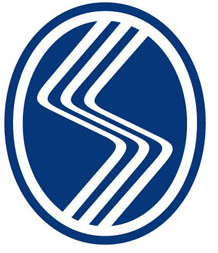Açık Akademik Arşiv Sistemi
Investigation of the Smoke Ventilation and Evacuation Strategies to Decrease Smoke Poisoning Risk by Coupling Fire and Evacuation Simulations
JavaScript is disabled for your browser. Some features of this site may not work without it.
| dc.contributor.authors | Coskun, G.; Demir, U.; Soyhan, H. S. | |
| dc.date.accessioned | 2023-01-24T12:08:38Z | |
| dc.date.available | 2023-01-24T12:08:38Z | |
| dc.date.issued | 2022 | |
| dc.identifier.issn | 1735-3572 | |
| dc.identifier.uri | http://dx.doi.org/10.47176/jafm.15.03.33252 | |
| dc.identifier.uri | https://hdl.handle.net/20.500.12619/99494 | |
| dc.description | Bu yayın 06.11.1981 tarihli ve 17506 sayılı Resmî Gazete’de yayımlanan 2547 sayılı Yükseköğretim Kanunu’nun 4/c, 12/c, 42/c ve 42/d maddelerine dayalı 12/12/2019 tarih, 543 sayılı ve 05 numaralı Üniversite Senato Kararı ile hazırlanan Sakarya Üniversitesi Açık Bilim ve Açık Akademik Arşiv Yönergesi gereğince telif haklarına uygun olan nüsha açık akademik arşiv sistemine açık erişim olarak yüklenmiştir. | |
| dc.description.abstract | In this study spread of smoke from a possible fire in a University building and the evacuation time of occupants were simulated. Fire dynamic simulations (FDS) have been done for natural and forced smoke evacuation with different scenarios; at the same time, evacuation simulations have also been done for various scenarios for different exits at the building. While occupants move through changing CO, CO2, and O-2 concentrations, Fractional Effective Dose (FED) was gathered to obtain results from both simulations. FED results were evaluated for poisoning risk of occupants. According to comparative results, the combination of scenarios that forced smoke evacuation by fan and evacuation of occupants from all exits at the basement of the building has the lowest FED value. On the other hand, depending on the fire source and smoke movement, sometimes occupants cannot use all exits. Therefore, evacuation simulation has been done separately from each exit and evaluated with all FDS results. | |
| dc.language | English | |
| dc.language.iso | eng | |
| dc.publisher | ISFAHAN UNIV TECHNOLOGY | |
| dc.relation.isversionof | 10.47176/jafm.15.03.33252 | |
| dc.subject | Thermodynamics | |
| dc.subject | Mechanics | |
| dc.subject | Fire dynamic simulator | |
| dc.subject | Evacuation simulation | |
| dc.subject | Smoke movement | |
| dc.subject | Fractional effective dose | |
| dc.title | Investigation of the Smoke Ventilation and Evacuation Strategies to Decrease Smoke Poisoning Risk by Coupling Fire and Evacuation Simulations | |
| dc.type | Article | |
| dc.identifier.volume | 15 | |
| dc.identifier.startpage | 659 | |
| dc.identifier.endpage | 671 | |
| dc.relation.journal | JOURNAL OF APPLIED FLUID MECHANICS | |
| dc.identifier.issue | 3 | |
| dc.identifier.doi | 10.47176/jafm.15.03.33252 | |
| dc.identifier.eissn | 1735-3645 | |
| dc.contributor.author | Coskun, G. | |
| dc.contributor.author | Demir, U. | |
| dc.contributor.author | Soyhan, H. S. | |
| dc.relation.publicationcategory | Makale - Uluslararası Hakemli Dergi - Kurum Öğretim Elemanı | |
| dc.rights.openaccessdesignations | gold |
Files in this item
| Files | Size | Format | View |
|---|---|---|---|
|
There are no files associated with this item. |
|||











